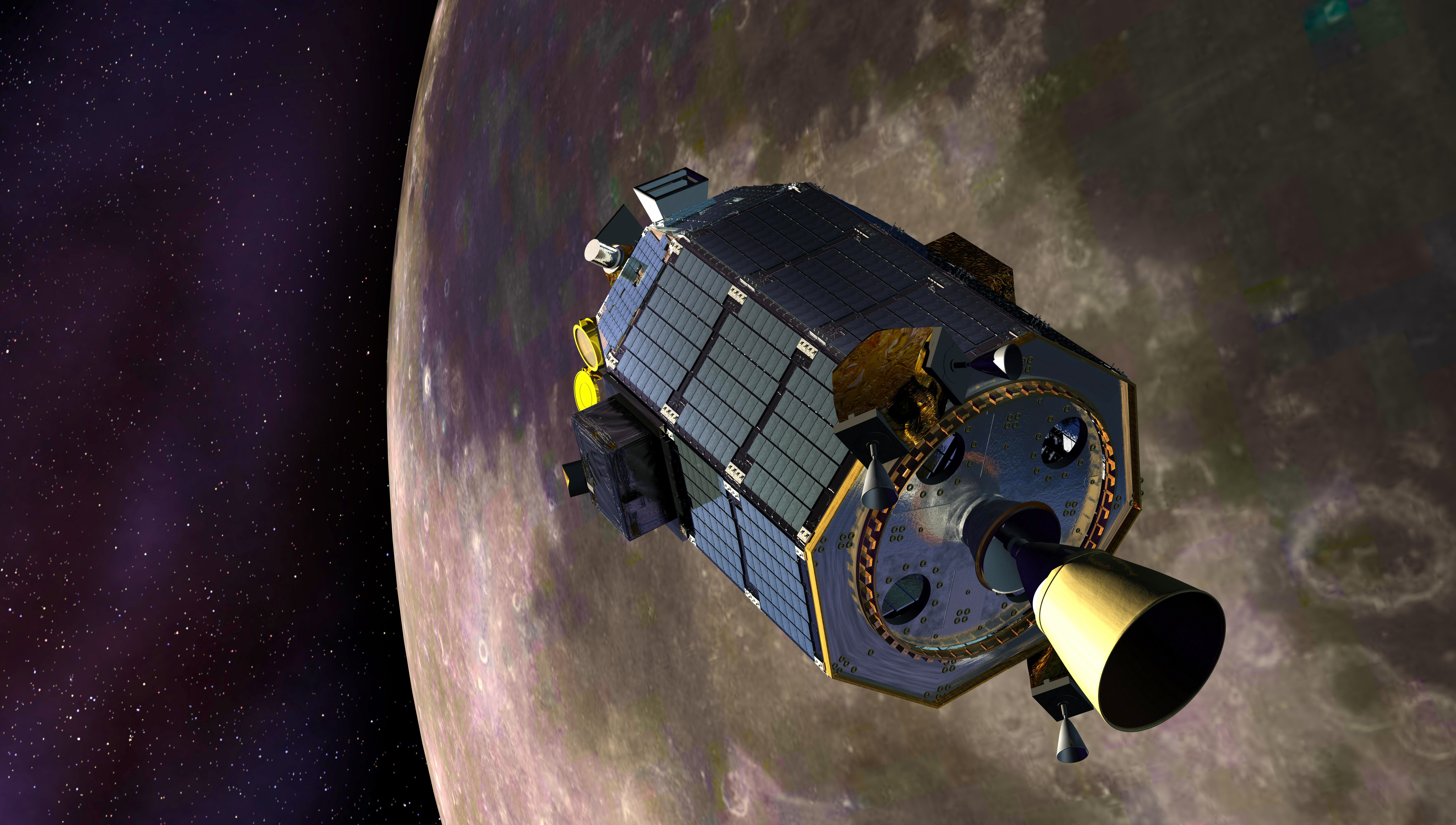Missions
Lunar Atmosphere and Dust Environment Explorer (LADEE)

An artist's concept of NASA's Lunar Atmosphere and Dust Environment Explorer (LADEE) spacecraft orbiting the moon and preparing to fire its maneuvering thrusters to maintain a safe orbital altitude. Image Credit: NASA Ames / Dana Berry
Launched in September 2013 from NASA's Wallops Flight Facility in Virginia, LADEE began orbiting the moon Oct. 6 and gathering science data Nov. 10. The spacecraft entered its science orbit around the moon's equator on Nov. 20, and in March 2014, LADEE extended its mission operations following a highly successful 100-day primary science phase.
LADEE was a mission of firsts, achieving yet another first by successfully flying more than 100 orbits at extremely low altitudes.
LADEE also hosted NASA’s first dedicated system for two-way communication using laser instead of radio waves. The Lunar Laser Communication Demonstration (LLCD) made history using a pulsed laser beam to transmit data over the 239,000 miles from the moon to the Earth at a record-breaking download rate of 622 megabits-per-second (Mbps). In addition, an error-free data upload rate of 20 Mbps was transmitted from the primary ground station in New Mexico to the Laser Communications Space Terminal aboard LADEE.
LADEE gathered detailed information about the structure and composition of the thin lunar atmosphere. In addition, scientists hope to use the data to address a long-standing question: Was lunar dust, electrically charged by sunlight, responsible for the pre-sunrise glow seen above the lunar horizon during several Apollo missions?
"LADEE was a mission of firsts, achieving yet another first by successfully flying more than 100 orbits at extremely low altitudes," said Joan Salute, LADEE program executive, at NASA Headquarters in Washington. "Although a risky decision, we're already seeing evidence that the risk was worth taking.”
A thorough understanding of the characteristics of our nearest celestial neighbor will help researchers understand other bodies in the solar system, such as large asteroids, Mercury and the moons of outer planets.
Name: LADEE is an acronym for Lunar Atmosphere and Dust Environment Explorer.
Main structure: 7.7 feet (2.37 meters) high, 4.74 feet (1.85 meters) wide, 4.74 feet (1.85 meters) deep
Total solar array power at 1 AU: 295 watts
Power: 30 panels of silicon solar cells mounted on the satellite’s exterior surfaces
Batteries: 1 Lithium-ion battery providing up to 24 amp-hours of 28-volt power
Instruments
- Lunar Dust Experiment (LDEX)
- Neutral Mass Spectrometer (NMS)
- Ultraviolet and Visible Spectrometer (UVS)
- Lunar Laser Communications Demonstration (LLCD)
Mass at Launch: 844.4 pounds (383 kilograms)
Dry Mass: 547.2 pounds (248.2 kilograms)
Fuel/He: 297.2 pounds (134.8 kilograms)
Payloads: 109.3 pounds (49.6 kilograms)
Launch Vehicle: U.S. Air Force Minotaur V
Height with payload: 80.59 feet tall (24.56 meters) and 7.67 feet (2.34 m) in diameter Mass fully fueled: 197,034 lbs (89,373 kg)
Launch Site: Wallops Flight Facility, Wallops Island, Va.
Launch: Sep. 7, 2013 (03:27 UTC)
Launch Location: Pad 0B, Wallops Flight Facility, Wallops Island, Va.
Moon Arrival Date: Oct. 6, 2013
Science Orbit Altitude: 12.4 – 37.3 miles (20 - 60 kilometers)
Program
The LADEE mission totals approximately $280 million, which includes spacecraft development and science instruments, launch services, mission operations, science processing and relay support.
